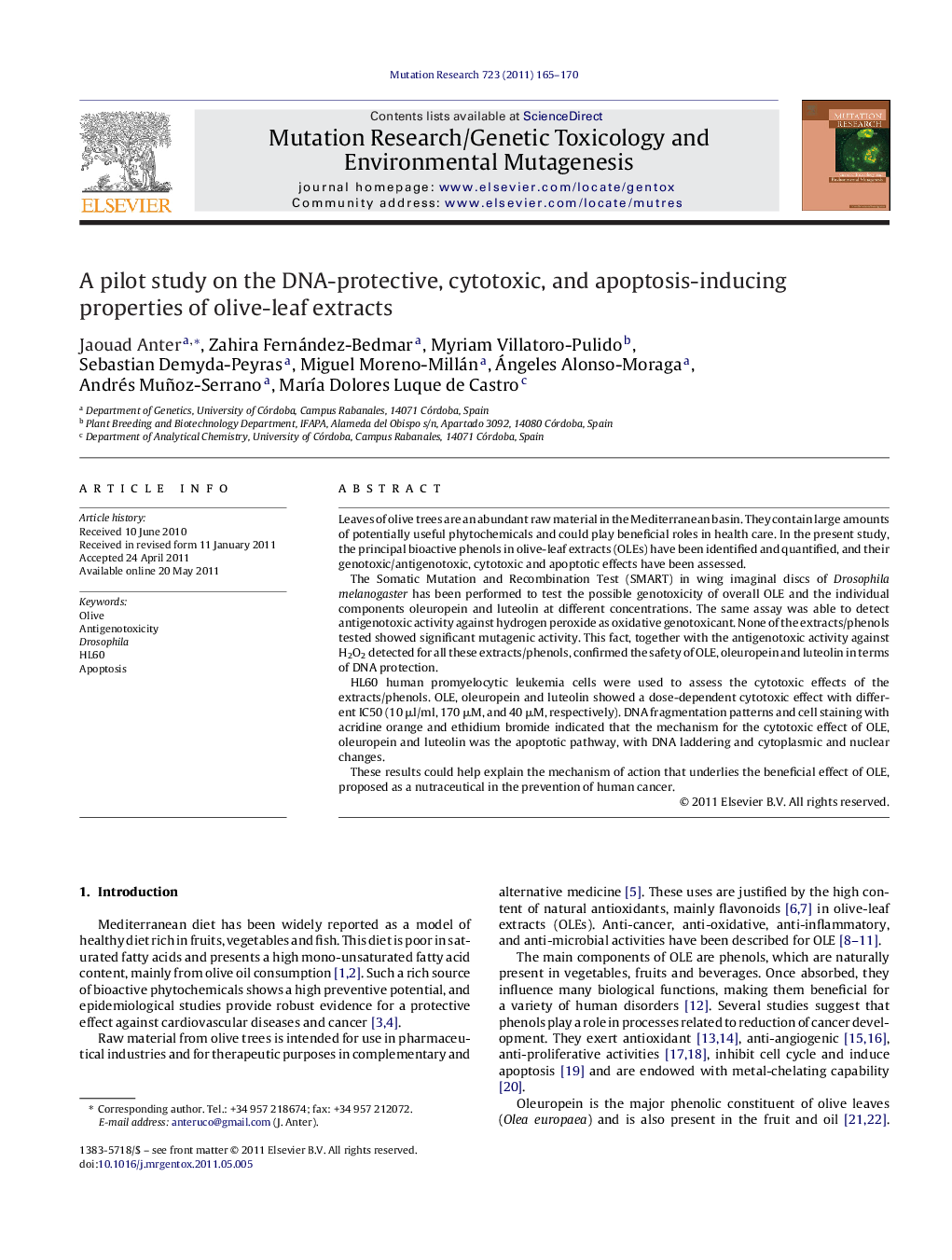| Article ID | Journal | Published Year | Pages | File Type |
|---|---|---|---|---|
| 2148328 | Mutation Research/Genetic Toxicology and Environmental Mutagenesis | 2011 | 6 Pages |
Leaves of olive trees are an abundant raw material in the Mediterranean basin. They contain large amounts of potentially useful phytochemicals and could play beneficial roles in health care. In the present study, the principal bioactive phenols in olive-leaf extracts (OLEs) have been identified and quantified, and their genotoxic/antigenotoxic, cytotoxic and apoptotic effects have been assessed.The Somatic Mutation and Recombination Test (SMART) in wing imaginal discs of Drosophila melanogaster has been performed to test the possible genotoxicity of overall OLE and the individual components oleuropein and luteolin at different concentrations. The same assay was able to detect antigenotoxic activity against hydrogen peroxide as oxidative genotoxicant. None of the extracts/phenols tested showed significant mutagenic activity. This fact, together with the antigenotoxic activity against H2O2 detected for all these extracts/phenols, confirmed the safety of OLE, oleuropein and luteolin in terms of DNA protection.HL60 human promyelocytic leukemia cells were used to assess the cytotoxic effects of the extracts/phenols. OLE, oleuropein and luteolin showed a dose-dependent cytotoxic effect with different IC50 (10 μl/ml, 170 μM, and 40 μM, respectively). DNA fragmentation patterns and cell staining with acridine orange and ethidium bromide indicated that the mechanism for the cytotoxic effect of OLE, oleuropein and luteolin was the apoptotic pathway, with DNA laddering and cytoplasmic and nuclear changes.These results could help explain the mechanism of action that underlies the beneficial effect of OLE, proposed as a nutraceutical in the prevention of human cancer.
